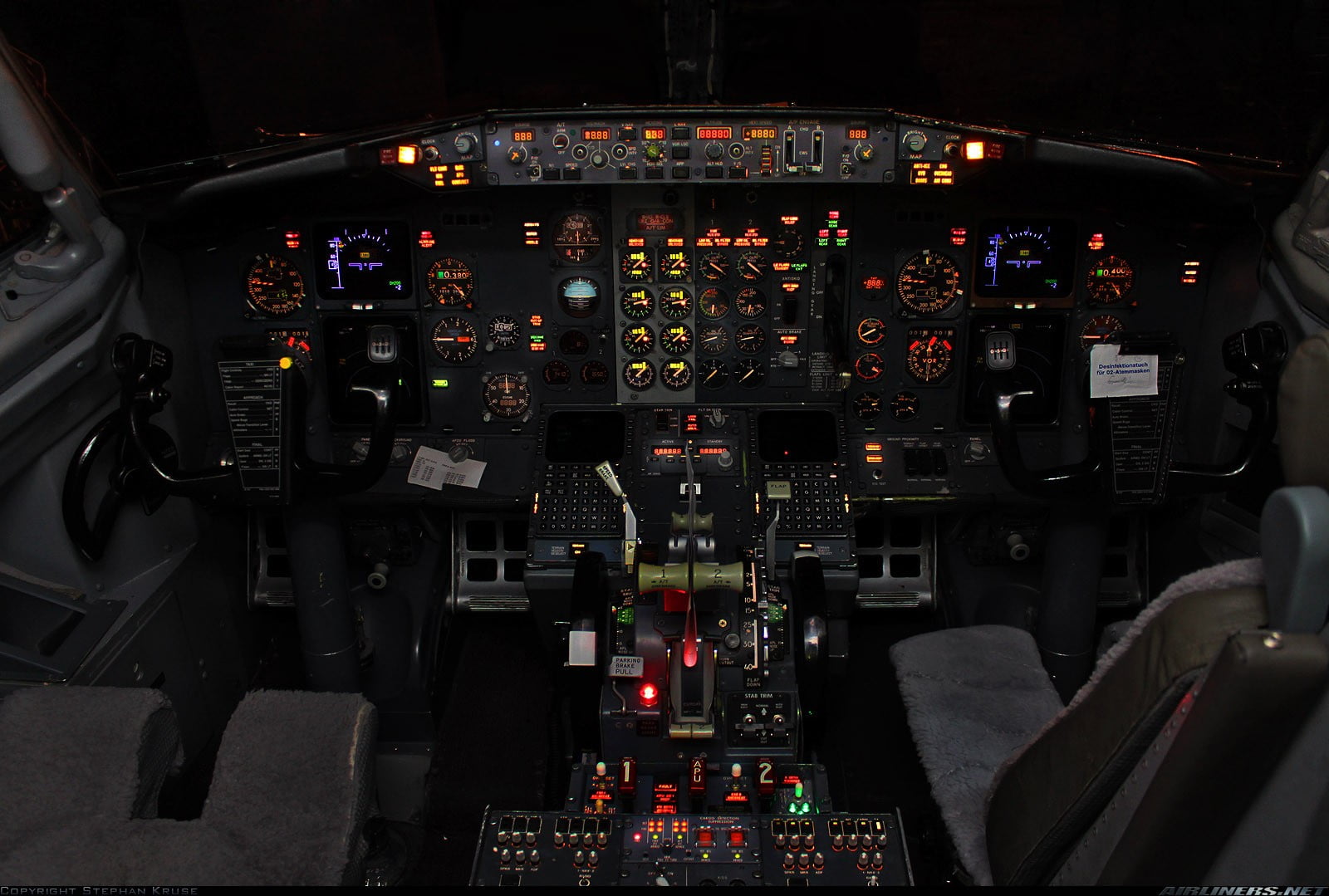

"Using the flight deck noise levels measured by Boeing NoiseĮngineering during a typical flight profile (entire flight), a dailyĪ-weighted sound exposure was calculated using ISO/DIS 1999 Many pilots consider the 737 flightdeck to be generally loud. The Captains seat, compared to 90-93dB in the cabin. The design sound pressure level at 35,000ft, M0.74, cruise thrust is 87dB at The volume level for theseĬallouts and any other aural warnings is set so that they can still be audibleĪt the highest ambient noise levels, this is considered to be when the aircraft If is often commented how loud these callouts are.
BOEING 737 COCKPIT SIGNALS FULL
Test, pressing for 10 seconds will give a full vocabulary test. Pressing SYS TEST quickly will give a short confidence To test the GPWS, ensure that the weather radar is on in TEST mode andĭisplayed on the EHSI. Only certain warningsĬan be silenced whilst the condition exists. Wheel-well for an E & E bay overheat or IRS’s on DC. External aural warningsĪre: The fire bell in the wheel well and the ground call horn in the nose Mach/airspeed overspeed, stall warning, GPWS and TCAS. Satisfactory - indicate a satisfactory or ON condition.Ĭockpit aural warnings include the fire bell, take-offĬonfiguration warning, cabin altitude, landing gear configuration warning, Lights - Advisory - eg valve positions and unless bright blue, ieĪ valve/switch disagreement, do not require crew action.

Lights - Caution - require timely corrective action. Lights - Warning - indicate a critical condition and require immediate action. May be interchanged with others of the same caption. TheĬaution lights are keyed to prevent them from being replaced incorrectly, but Inhibited, both bulbs of each caution light should be carefully checked. When conducting a light test, during which the system will be PRESSURE light (requires both), REVERSER lights (requires 12 seconds) and INSTR Exceptions to this include a single centre fuel tank LOW Powered from the battery bus and will illuminate when an amber caution


Master caution lights and the system annunciator are If a single channel caution isĮncountered, the QRH drill should not be actioned. Previously cancelled or single channel cautions. Pressing the system annunciator will show any the respective non-normal checklist is not needed.check the DDPG or the operator equivalent.on the ground, check the DDPG or the operator equivalentĭuring recall, an amber caution illuminates and then extinguishes.do the respective non-normal checklist (NNC).Start, a red warning or amber caution light illuminates: Operator equivalent to decide if the condition has a dispatch effect check the Dispatch Deviations Procedures Guide (DDPG) or the.If an individual system light indicates an improper Gives the following guidance on master caution illuminations on the ground:īefore engine start, use individual system lights to verify the On the ground, the master caution system will also tell you if theĬondition is dispatchable or if the QRH needs to be actioned. Same orientation as the overhead panel e.g. System annunciators (shown above) are arranged such that the cautions are in the In simple terms it is an attention getter that alsoĭirects the pilot toward the problem area concerned. Workload as it was the first Boeing airliner to be produced without aįlight engineer. The Master Caution system was developed for the 737 to ease pilot


 0 kommentar(er)
0 kommentar(er)
